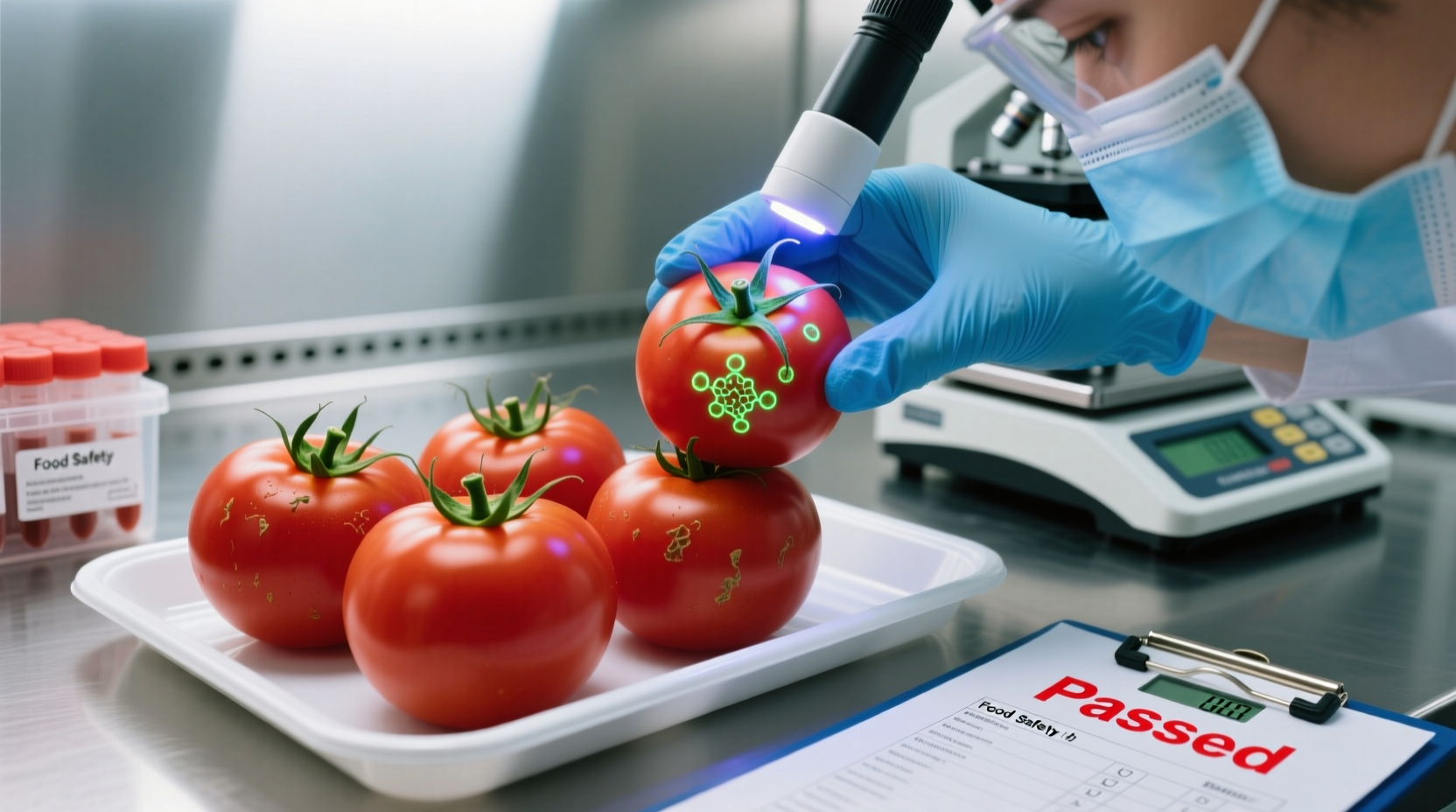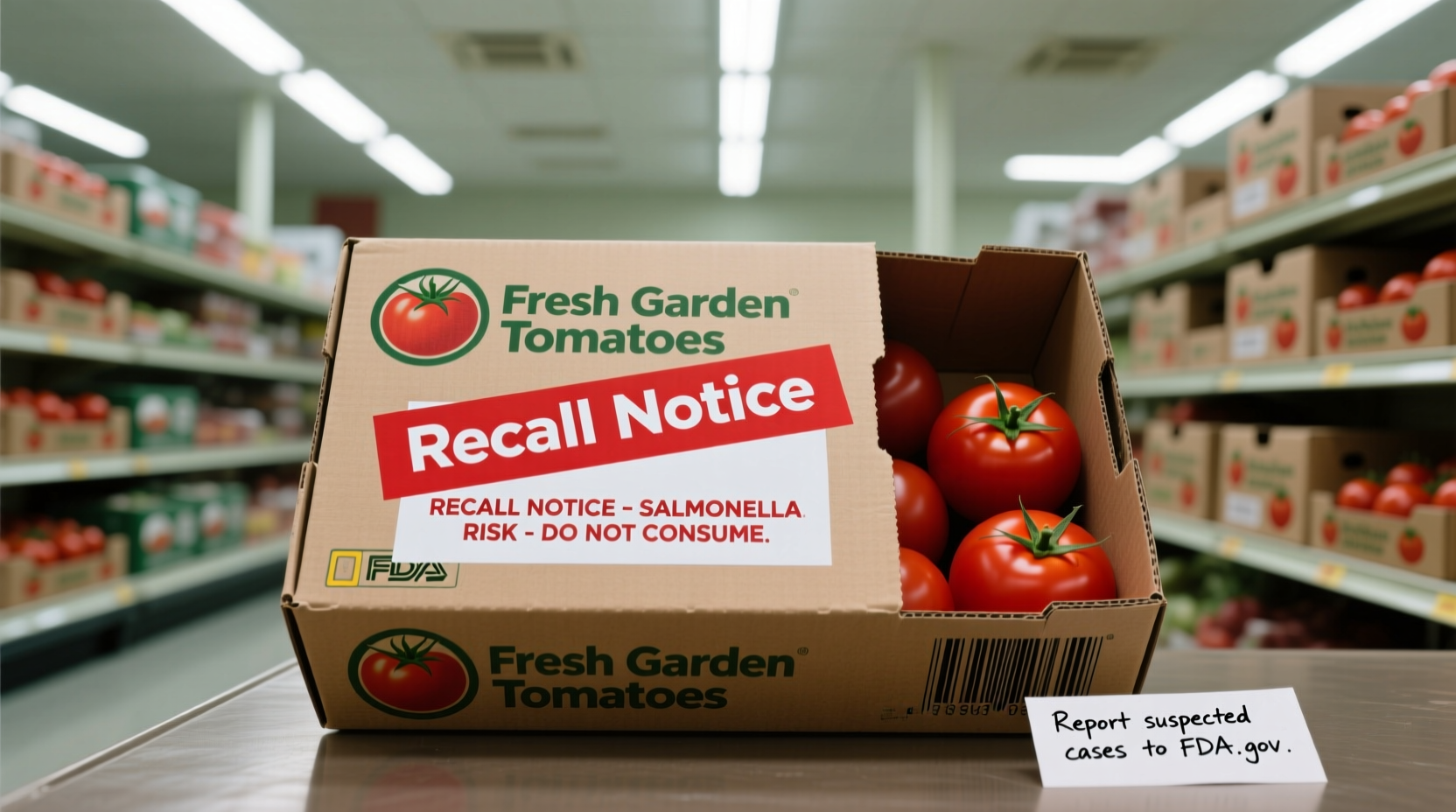As of today, there is no active nationwide salmonella tomato recall in effect. However, consumers should remain vigilant as outbreaks can emerge suddenly. If you purchased tomatoes with visible damage, unusual odor, or from an unverified source, discard them immediately and wash hands thoroughly.
Understanding Current Tomato Safety: What You Need to Know Right Now
While no widespread salmonella tomato recall is currently active, food safety experts recommend staying informed about potential risks. Recent data shows tomatoes have been involved in 7 foodborne illness outbreaks in the past decade, making it essential to understand how to protect yourself. This guide provides actionable steps to keep your family safe while explaining how to verify future recalls through official channels.
How to Verify Tomato Safety in 3 Simple Steps
When concerns about contaminated produce arise, follow this verification process before taking action:
- Check official government sources - Only information from FDA, CDC, or USDA constitutes an official recall
- Confirm product details - Recalls specify exact brands, packaging dates, and distribution regions
- Verify through multiple channels - Cross-reference with your local health department
Many social media posts about "urgent" tomato recalls turn out to be misinformation. In 2023, the FDA reported that 43% of food safety alerts shared online contained inaccurate details that caused unnecessary panic.
Tomato Recall Timeline: From Detection to Resolution
Understanding how recalls develop helps consumers respond appropriately. Here's the typical progression of a produce-related food safety incident:
Which Tomato Products Carry Higher Risk?
Not all tomato products face equal contamination risks. Understanding these context boundaries helps you assess actual danger levels:
| Product Type | Risk Level | Reason |
|---|---|---|
| Raw whole tomatoes | Moderate | Surface contamination possible; proper washing reduces risk |
| Fresh-cut tomatoes | High | Cutting process can spread bacteria internally |
| Canned tomatoes | Very Low | Heat processing destroys pathogens |
| Dried tomatoes | Low | Low moisture environment inhibits bacterial growth |

Recognizing Salmonella Symptoms vs. Other Illnesses
Many consumers mistake stomach issues for salmonella when they're actually caused by other factors. This comparison helps identify true salmonella concerns:
- Salmonella symptoms typically appear 6-72 hours after exposure and include diarrhea, fever, and abdominal cramps lasting 4-7 days
- Duration matters - Most viral stomach bugs resolve in 24-48 hours, while salmonella often persists longer
- Seek medical attention if you experience bloody diarrhea, high fever (over 102°F), or signs of dehydration
Practical Steps for Safe Tomato Handling
Whether recalls are active or not, these food safety practices significantly reduce risk:
At the Store
- Choose tomatoes that are firm, without cuts or bruises
- Keep produce separate from raw meats in your shopping cart
- Buy perishable items last to minimize time at room temperature
At Home
- Wash hands for 20 seconds before and after handling produce
- Clean tomatoes under running water (not standing water)
- Use a clean produce brush for firm produce like tomatoes
- Refrigerate cut tomatoes within 2 hours
How to Stay Updated on Food Safety Alerts
Instead of relying on social media rumors, establish these reliable information channels:
- Sign up for FDA recall alerts at fda.gov/safety/recalls-alerts
- Download the CDC's Foodborne Outbreak Online Database (FOOD Tool)
- Follow your state's department of agriculture on social media
- Check store receipt alerts - many grocery chains notify customers of affected products
What to Do If You Find a Recalled Product
If you discover tomatoes matching an active recall, follow these FDA-recommended steps:
- Do not consume the product
- Place it in a sealed plastic bag to prevent cross-contamination
- Contact the store where you purchased it for refund information
- Report the incident to the FDA through their online portal
- Monitor yourself for symptoms for the next 72 hours
Understanding Salmonella Sources in Produce
Unlike meat contamination, salmonella in tomatoes typically originates from environmental factors:
- Irrigation water contaminated with animal waste
- Improper composting practices in fields
- Cross-contamination during processing and packaging
- Handling by workers with poor hygiene practices
The FDA's Produce Safety Rule, implemented in 2018, has significantly reduced these risks through mandatory water testing and worker training requirements. Since its implementation, tomato-related outbreaks have decreased by 31% according to CDC data.
When to Contact Health Authorities
Report suspected foodborne illness to help authorities identify potential outbreaks:
- Contact your local health department if multiple people get sick after eating the same food
- Save any remaining suspect product for testing (store in sealed container)
- Keep grocery receipts that show purchase date and location
- Document symptoms with dates and severity











 浙公网安备
33010002000092号
浙公网安备
33010002000092号 浙B2-20120091-4
浙B2-20120091-4